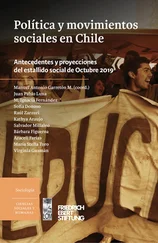Martínez AE, Gomez JP (2013). Are mixed-species bird flocks stable through two decades? The American Naturalist 181:E53-E59.
Martínez AE, Gomez JP, Ponciano JM, Robinson SK (2016). Functional traits, flocking propensity, and perceived predation risk in an Amazonian understory bird community. The American Naturalist 187:607-619.
Maruyama PK, Cunha AF, Tizo-Pedroso E, Del-Claro K (2010). Relation of group size and daily activity patterns to southern lapwing ( Vanellus chilensis ) behaviour. Journal of Ethology 28:339-344.
Marzluff JM, Heinrich B, Marzluff CS (1996). Raven roosts are mobile information centres. Animal Behaviour 51:89-103.
McCracken GF (1984). Communal nursing in Mexican free-tailed bat maternity colonies. Science 223:1090-1091.
McCracken GF, Gustin MK (1991). Nursing behavior in Mexican free-tailed bat maternity colonies. Ethology 89:305-321.
McGowan KJ, Woolfenden GE (1989). A sentinel system in the Florida scrub jay. Animal Behaviour 37:1000-1006.
McKitrick MC (1993). Phylogenetic constraint in evolutionary theory: has it any explanatory power? Annual Review of Ecology and Systematics 24:307-330.
Medina-Vogel G, Boher F, Flores G, Santibañez A, Soto-Azat C (2007). Spacing behavior of marine otters ( Lontra felina ) in relation to land refuges and fishery waste in central Chile. Journal of Mammalogy 88:487-494.
Mella JE (2017). Guía de campo reptiles de Chile . Tomo 1: zona central . Peñaloza APG (ed.). Alvimpress Impresores, Limitada, Santiago, Chile.
Merino ML, Cajal JL (1993). Estructura social de la población de guanacos ( Lama guanicoe Muller, 1776) en la costa norte de Península Mitre, Tierra del Fuego, Argentina. Studies on Neotropical Fauna and Environment 28:129-138.
Merkt JR (1987). Reproductive seasonality and grouping patterns on the north Andean deer or taruca ( Hippocamelus antisensis ) in southern Peru. Pp. 388-401, en: Biology and management of the Cervidae (Wemmer CM, ed.). Smithsonian Institution Press, Washington, Estados Unidos de América.
Michelena P, Gautrais J, Gérard JF, Bon R, Deneubourg JL (2008). Social cohesion in groups of sheep: effect of activity level, sex composition and group size. Applied Animal Behaviour Science 112:81-93.
Mittelbach G (1984). Group size and feeding rate in bluegills. Copeia 1984:998-1000.
Modig AO (1996). Effects of body size and harem size on male reproductive behaviour in the southern elephant seal. Animal Behaviour 51:1295-1306.
Mohlis C (1983). Información preliminar sobre la conservación y manejo de la chinchilla silvestre en Chile. Corporación Nacional Forestal, Boletín Técnico (Chile) 3:1-41.
Møller AP, Birkhead TR (1993). Cuckoldry and sociality: a comparative study of birds. The American Naturalist 142:118-140.
Montgomerie RD, Weatherhead PJ (1988). Risks and rewards of nest defence by parent birds. The Quarterly Review of Biology 63:167-187.
Morais HC (1994). Coordinated group ambush: a new predatory behavior in Azteca ants (Dolichoderinae). Insectes Sociaux 41:339-342.
Morales K, Sánchez R, Bruning P, Cárdenas L, Manrıquez PH, Brante A (2016). A multiple microsatellite assay to evaluate the mating behavior of the intensively exploited marine gastropod Concholepas concholepas (Bruguiere, 1789) (Gastropoda: Muricidae). Nautilus 130:153-157.
Moreno J, Merino S, Lobato E, Rodríguez-Gironés MA, Vásquez RA (2007). Sexual dimorphism and parental roles in the thorn-tailed rayadito (Furnariidae). The Condor 109:312-320.
Mori H, Saito Y, Tho YP (1999). Co-operative group predation in a sit-and-wait cheyletid mite. Experimental & Applied Acarology 23:643-651.
Mosser A, Packer C (2009). Group territoriality and the benefits of sociality in the African lion, Panthera leo . Animal Behaviour 78:359-370.
Muñoz MR, Cancino JM (1989). Consecuencias del tamaño colonial en la tasa metabólica de Cauloramphus spiniferum (Bryozoa). Revista Chilena de Historia Natural 62:205-216.
Muñoz JLP, Camus PA, Labra FA, Finke GR, Bozinovic F (2008). Thermal constraints on daily patterns of aggregation and density along an intertidal gradient in the periwinkle Echinolittorina peruviana . Journal of Thermal Biology 33:149-156.
Myers JP (1983). Space, time and the pattern of individual associations in a group-living species: sanderlings have no friends. Behavioral Ecology and Sociobiology 12:129-134.
Navarrete SA, Castilla JC (1990). Barnacle walls as mediators of intertidal mussel recruitment: effects of patch size on the utilization of space. Marine Ecology Progress Series 68:113-119.
Novaes WG, Cintra R (2013). Factors influencing the selection of communal roost sites by the black vulture Coragyps atratus (Aves: Cathartidae) in an urban area in central Amazon. Zoologia 30:607-614.
Novaro AJ, Moraga CA, Briceño C, Funes MC, Marino A (2009). First records of culpeo ( Lycalopex culpaeus ) attacks and cooperative defense by guanacos ( Lama guanicoe ). Mammalia 73:148-150.
Nowak MA, Tarnita CE, Wilson EO (2010). The evolution of eusociality. Nature 466:1057-1062.
Nunes S. (2007) Dispersal and philopatry. Pp. 150-62, en: Rodent societies: an ecological and evolutionary perspective (Wolff JO, Sherman PW, eds.). University of Chicago Press, Chicago, Estados Unidos de América.
O’Brien SL, Tammone MN, Cuello P, Lacey EA (2020). Facultative sociality in a subterranean rodent, the highland tuco-tuco ( Ctenomys opimus ). Biological Journal of the Linnean Society .
Ojeda VS (2004). Breeding biology and social behaviour of Magellanic woodpeckers ( Campephilus magellanicus ) in Argentine Patagonia. European Journal of Wildlife Research 50:18-24.
Olavarría C, Acevedo J, Vester HI, Zamorano-Abramson J, Viddi FA, Gibbons J, Newcombe E, Capella J, Rus Hoelzel A, Flores M, Hucke-Gaete R, Torres-Flórez JP (2010). Southernmost distribution of common bottlenose dolphins ( Tursiops truncatus ) in the eastern South Pacific. Aquatic Mammals 36:288-293.
Olendorf R, Getty T, Scribner K (2004). Cooperative nest defence in red-winged blackbirds: reciprocal altruism, kinship or by-product mutualism? Proceedings of the Royal Society of London B: Biological Sciences 271:177-182.
Orellana SA, Rojas RAF (2005). Possible social foraging behavior in the red-backed hawk ( Buteo polysoma ). Ornitologia Neotropical 19:271-275.
Ortega IM, Franklin WL (1995). Social organization, distribution and movements of a migratory guanaco. Revista Chilena de Historia Natural 68:489-500.
Ostfeld RS, Ebensperger L, Klosterman L, Castilla JC (1989). Foraging, activity budget, and social behavior of the South American marine otter, Lutra felina . National Geographic Research 5:422-438.
Ostner J, Schülke O (2018). Linking sociality to fitness in primates: a call for mechanisms. Advances in the Study of Behavior 50:127-175.
Ottensmeyer CA, Whitehead H (2003). Behavioural evidence for social units in long-finned pilot whales. Canadian Journal of Zoology 81:1327-1338.
Packer C (1977). Reciprocal altruism in Papio anubis . Nature 265:441-443.
Padró J, Pauli JN, Perrig PL, Lambertucci SA (2019). Genetic consequences of social dynamics in the Andean condor: the role of sex and age. Behavioral Ecology and Sociobiology 73:100.
Parker PG, Waite TA, Decker MD (1995). Kinship and association in communally roosting black vultures. Animal Behaviour 49:395-401.
Читать дальше












